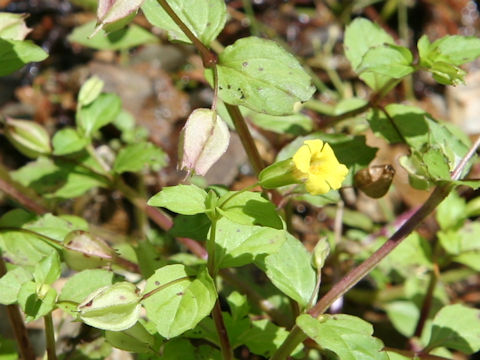 |


















|

|
íªÌenðͶßAäpâ©N¼ìAE¼ÉªzµÄ¢Ü·BRn̼nâaÌȩɶ¦A³ÍPO`ROZ`ÉÈèÜ·BtÍ`ܽÍL`Ū èÜ·BU©çW²ëAãÌtãüÉ©F¢óÔð穹ܷBÔ¥Ìæ[ÍTôµÜ·Ba¼ÍAÊÀªÜóÌäÓÉïÜêAuÙ¨¸«i_÷jvðví¹é±Æ©çBäpØêÅÍuò¢a_÷vAêÅÍua_÷igou suan jiangjvÆÄÎêÜ·B
|

|
S}mnOTÈ~]zIYL®Ì½NÅAw¼Í Mimulus nepalensis var. japonicus (syn. Mimulus tenellus var. japonicus)Bp¼Í èܹñB
|

|
The "Mizo-hoozuki" (Mimulus nepalensis var. japonicus) belongs to Scrophulariaceae (the Figwort family). It is a perennial herb that is distributed throughout Japan, Taiwan, the southern Korean Peninsula, and central and western China. It grows in swamps and ditches in mountainous areas and is 10 to 30 cm tall. It produces yellow tubular flowers in the upper leaf axils from June to August. The corolla has five lobes at the tip. The Japanese name comes from the fact that the fruit is encased in a pouch-like calyx, which reminds one of "hoozuki" (Winter cherry). In Taiwanese Chinese, it is called "ò¢a_÷" and in Chinese, "a_÷" (gou suan jiang).
|

|
[ãEP`R] ÞǧìãºêJÉÄA2005N0802úBeB
[S`VEº] ·ì§Éßs·JÍàuÍàѹvÉÄA2006N0824úBeB
|










